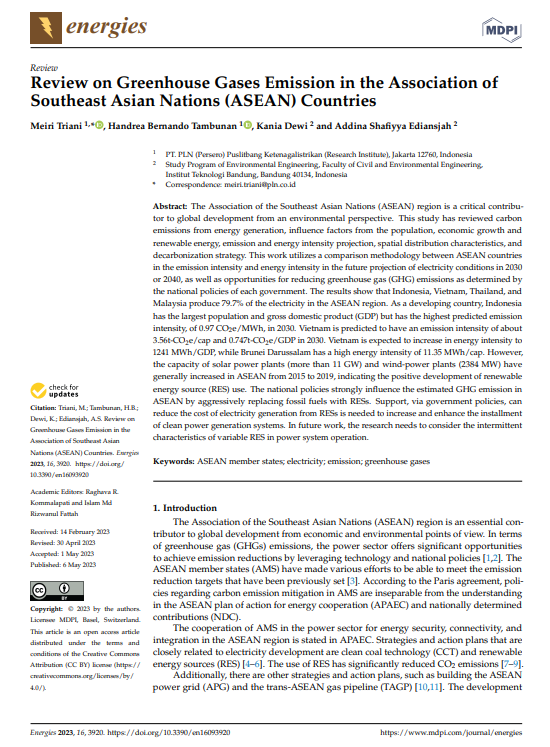The Association of the Southeast Asian Nations (ASEAN) region is a critical contributor to global development from an environmental perspective. This study has reviewed carbon emissions from energy generation, influence factors from the population, economic growth and renewable energy, emission and energy intensity projection, spatial distribution characteristics, and decarbonization strategy. This work utilizes a comparison methodology between ASEAN countries in the emission intensity and energy intensity in the future projection of electricity conditions in 2030 or 2040, as well as opportunities for reducing greenhouse gas (GHG) emissions as determined by the national policies of each government. The results show that Indonesia, Vietnam, Thailand, and Malaysia produce 79.7% of the electricity in the ASEAN region. As a developing country, Indonesia. has the largest population and gross domestic product (GDP) but has the highest predicted emission intensity, of 0.97 CO2e/MWh, in 2030. Vietnam is predicted to have an emission intensity of about 3.56t-CO2e/cap and 0.747t-CO2e/GDP in 2030. Vietnam is expected to increase in energy intensity to 1241 MWh/GDP, while Brunei Darussalam has a high energy intensity of 11.35 MWh/cap. However, the capacity of solar power plants (more than 11 GW) and wind-power plants (2384 MW) have generally increased in ASEAN from 2015 to 2019, indicating the positive development of renewable
energy source (RES) use. The national policies strongly influence the estimated GHG emission in ASEAN by aggressively replacing fossil fuels with RESs. Support, via government policies, can reduce the cost of electricity generation from RESs is needed to increase and enhance the installment of clean power generation systems. In future work, the research needs to consider the intermittent characteristics of variable RES in power system operation.
